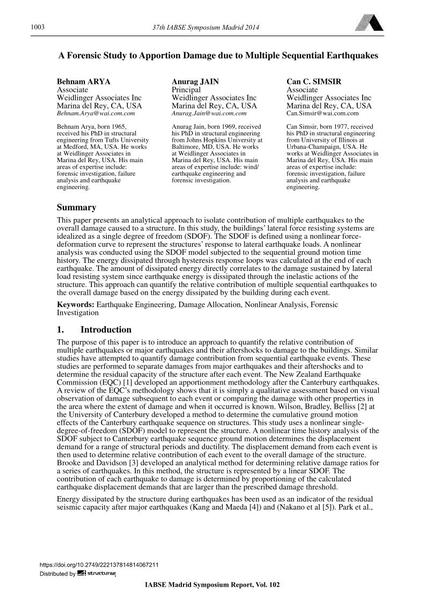A Forensic Study to Apportion Damage due to Multiple Sequential Earthquakes

|
|
|||||||||||
Détails bibliographiques
| Auteur(s): |
Behnam Arya
Anurag Jain Can C. Simsir |
||||
|---|---|---|---|---|---|
| Médium: | papier de conférence | ||||
| Langue(s): | anglais | ||||
| Conférence: | IABSE Symposium: Engineering for Progress, Nature and People, Madrid, Spain, 3-5 September 2014 | ||||
| Publié dans: | IABSE Symposium Madrid 2014 | ||||
|
|||||
| Page(s): | 1003-1010 | ||||
| Nombre total de pages (du PDF): | 8 | ||||
| Année: | 2014 | ||||
| DOI: | 10.2749/222137814814067211 | ||||
| Abstrait: |
This paper presents an analytical approach to isolate contribution of multiple earthquakes to the overall damage caused to a structure. In this study, the buildings’ lateral force resisting systems are idealized as a single degree of freedom (SDOF). The SDOF is defined using a nonlinear force- deformation curve to represent the structures’ response to lateral earthquake loads. A nonlinear analysis was conducted using the SDOF model subjected to the sequential ground motion time history. The energy dissipated through hysteresis response loops was calculated at the end of each earthquake. The amount of dissipated energy directly correlates to the damage sustained by lateral load resisting system since earthquake energy is dissipated through the inelastic actions of the structure. This approach can quantify the relative contribution of multiple sequential earthquakes to the overall damage based on the energy dissipated by the building during each event. |
||||
